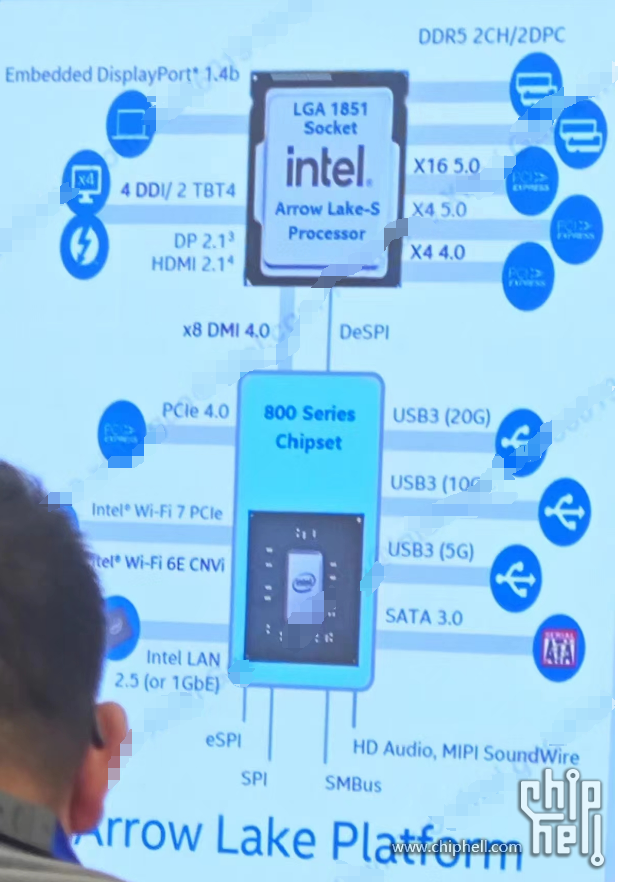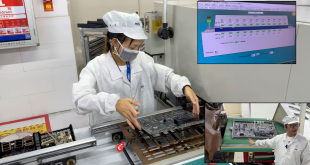Intel is gearing up to showcase its future LGA-1851 platform through a series of events for distributors and board partners. These activities are designed to set the stage for releasing the company's 800-series motherboards, including the Z890 chipset unveiled at Computex.
The technical diagram shared on Chiphell (via HXL) confirms that the PCIe configuration aligns with previously disclosed information. The upcoming CPUs are expected to offer 16 dedicated Gen5 lanes for graphics and 4 Gen5 lanes for storage, meaning customers will no longer have to choose between Gen5 lanes for GPUs and storage. Furthermore, a Gen 4×4 interface directly linked to the CPU will allow users to connect one or more SSDs to the CPU using the slower standard.

Image credit: Chiphell
In addition, the new CPUs will come equipped with Thunderbolt 4 controllers and support connectivity for up to four monitors using integrated graphics. This will enable users to connect DisplayPort 2.1 and HDMI 2.1 displays to the motherboard. While the specifications for USB 20G, 10G, and 5G connections have yet to be revealed, the chipset diagram indicates support for these capabilities. Moreover, it's mentioned that the boards will support Wi-Fi 6E/7 and Intel LAN 2.5 (or 1GbE) interfaces.
One significant change in the upcoming LGA-1851 platform is the exclusion of support for DDR4 memory. Unlike the Z690/Z790 boards, which supported DDR4 and DDR5, the new LGA-1851 boards will exclusively support DDR5. This move was initially met with resistance due to the high cost of DDR5 memory. However, DDR5 prices have since experienced a significant decline.
Intel has announced that Arrow Lake-S processors will be available in Q3 2024, but up to now, we haven't heard anything about a release date for the new Intel 800-series motherboards. However, the first boards should be available alongside Intel's new CPUs later this year.
Discuss on our Facebook page, HERE.
KitGuru says: Although we can't still attribute the specs for each Intel 800-series chipset, the overall package seems to align with what we have come to expect. Do you think DDR4 support should have remained?
 KitGuru KitGuru.net – Tech News | Hardware News | Hardware Reviews | IOS | Mobile | Gaming | Graphics Cards
KitGuru KitGuru.net – Tech News | Hardware News | Hardware Reviews | IOS | Mobile | Gaming | Graphics Cards


